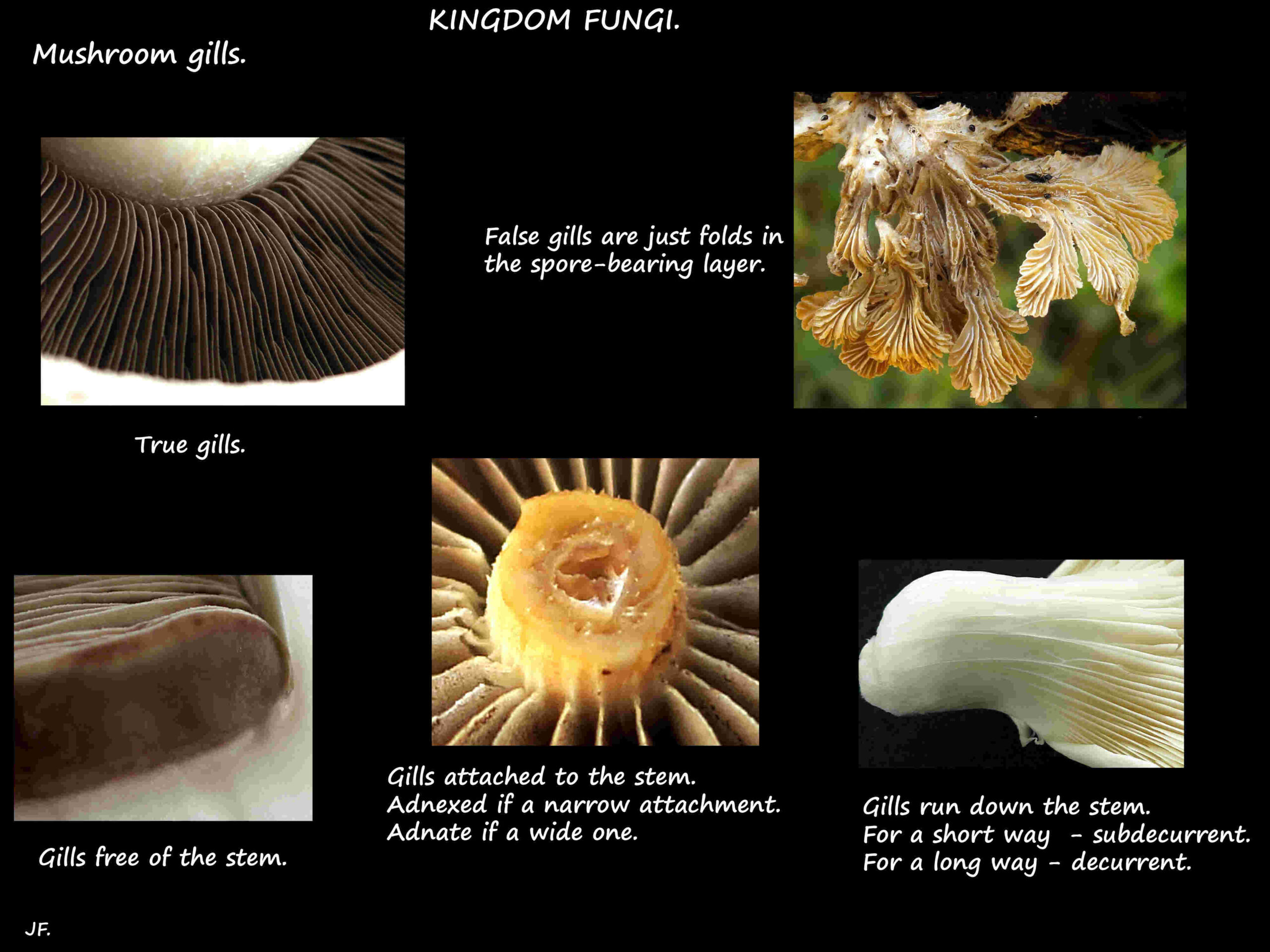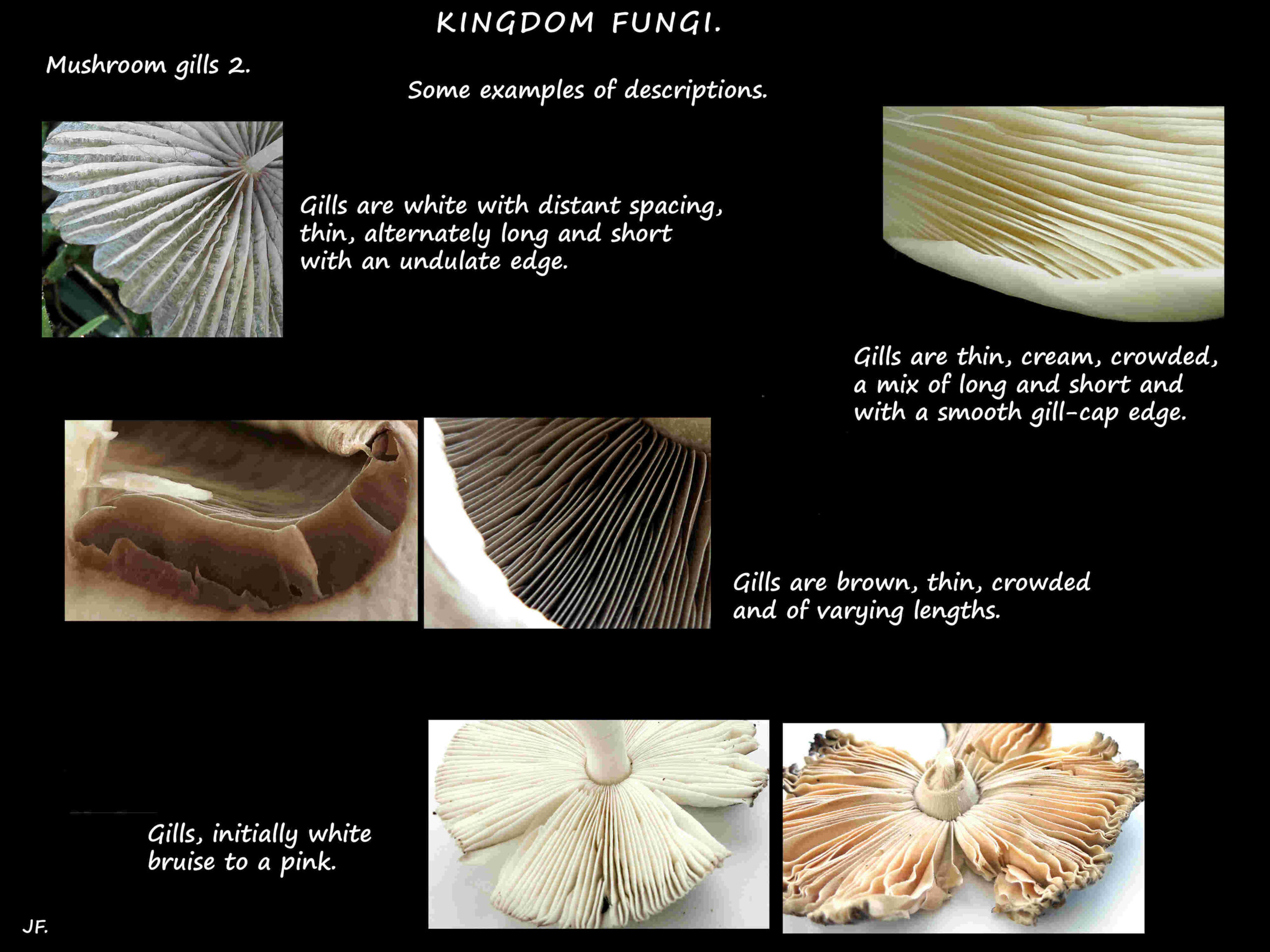Gills.
Gills are the thin blade-like plates or ribs under the cap of some mushrooms.
They support the hymenium or spore bearing layer.
They usually radiate from a central point and are easily separated from the rest of the cap.
Initially all gilled mushrooms were classified in the order Agaricales but it is now known
that they have evolved in other orders but still in the class Agaricomycetes.
They are seen in some genera in the orders Boletales, Gloeophyllales, Polyporales and Russulales.
Some Cantharellales have false gills which must be distinguished from true gills.
In some poroid fungi the pores form gill-like structures which do not separate easily from the cap.
Appearance.
There is much variation in the gills of different mushrooms and, again, more descriptive terms.
Features to look for include the position of the gills in relation to the stem (free, attached or running down it).
Whether they are thick or thin, close or remote, any branching, long or short and colour.
There are also many terms for the appearance of the junction of the cap and gills.
Some of these are:
- smooth – a straight line.
- fimbriate – a fine, fringe-like appearance.
- dentate – fine, regular teeth-like projections.
- serrate- larger, regular teeth.
- undulate – smooth edged waves.
Mushroom cap – contour of the edge.
There are numerous descriptive terms for variations in the contour of the cap edge.
These terms include.
- Plain – the junction of the upper and lower surfaces is a straight line.
- Incurved – upper edge turns down to a sharp point where it meets the gills.
- Rounded – the junction of the upper surface and the gills is a rounded curve.
- Upturned – the edge is only slightly turned up.
- Revolute – the edges of the cap rolls upwards.
- Involute – the cap turns down and the edge is rolled inwards.
J.F.




